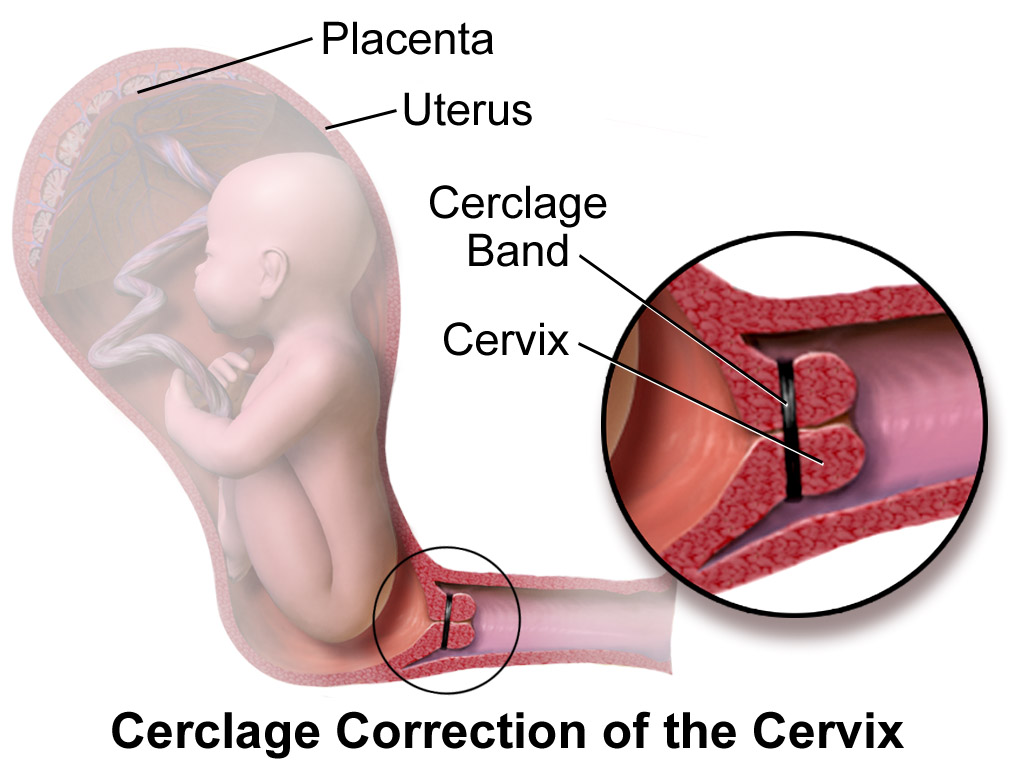Cervical Cerclage
What is Cervical Cerclage?
Cervical cerclage is a medical procedure performed during pregnancy in which the cervix is stitched closed or tightened to prevent preterm birth or pregnancy loss. The cervix, the lower portion of the uterus, connects the uterine cavity to the vagina and plays a vital role in childbirth. It remains mostly closed throughout a woman’s life, including pregnancy, but gradually softens and dilates during labor to allow the baby to pass through.

In some cases, the cervix begins to open prematurely, increasing the risk of preterm birth or pregnancy loss. Cervical cerclage helps prevent this by reinforcing the cervix. It is a minimally invasive procedure, and most women can return home on the same day.
It is important to note that cervical cerclage does not address all causes of preterm birth. For instance, preterm labor caused by ruptured membranes or infections inside the uterus cannot be resolved through cerclage. Additionally, cerclage is contraindicated in cases of active vaginal bleeding, intrauterine infection, or if labor has already begun.
Why Is Cervical Cerclage Performed?
In some women, the cervix is inherently weak, short, or soft, which can lead to early dilation before the fetus reaches full maturity. This condition, known as cervical insufficiency, may result in pregnancy loss or preterm delivery. Cervical cerclage is recommended in the following cases:
- Previous Pregnancy Loss: When a woman has experienced pregnancy loss in the second trimester due to painless cervical dilation.
- Short Cervix: If the cervical length is less than 25 mm before the 24th week of pregnancy.

Before pregnancy, the cervix is long and tightly closed, allowing only menstrual blood or sperm to pass. During pregnancy, it gradually softens and shortens in preparation for labor.
How is Cervical Cerclage Performed?
Cervical cerclage is usually performed under anesthesia to minimize pain. The procedure can involve:
Vaginal Approach:
A speculum is used to visualize the cervix.
The doctor places specialized stitches around the cervix to keep it closed.
This is the most common and minimally invasive method, allowing the patient to recover and leave the medical facility the same day.
Abdominal Approach:
A more complex procedure involving laparoscopic surgery.
This method is used when the cervix is too short or inaccessible via the vaginal route.
Hospitalization and a longer recovery period are typically required.
Frequently Asked Questions FAQ
Preparation for Cervical Cerclage
Before performing cervical cerclage, the healthcare provider conducts a thorough evaluation, including:
Ultrasound Examination: To assess fetal health and cervical length.
Cervical Cultures: To rule out infection.
Amniocentesis (if needed): To ensure there is no infection in the amniotic fluid.
In ideal scenarios, cervical cerclage is performed between the 12th and 14th weeks of pregnancy. However, it can be done as late as the 23rd week if cervical shortening or dilation is detected via ultrasound or pelvic examination.
Complications of Cervical Cerclage
Although generally safe, cervical cerclage carries potential risks, including:
Minor Issues: Pain or discomfort, spotting, or mild cramping, which often resolve on their own.
Serious Complications: In rare cases, the sutures may fail, leading to premature cervical dilation. Other risks include infection, heavy bleeding, or injury to nearby structures.
Recovery After Cervical Cerclage
Recovery time varies depending on the method used and the type of anesthesia administered.
Vaginal Cerclage: Patients can typically resume light activities within 2-3 days but should avoid strenuous activity or sexual intercourse until at least 32-34 weeks of pregnancy.
Abdominal Cerclage: As a surgical procedure, it requires a hospital stay and longer recovery time.
Rest and adherence to the doctor’s recommendations are crucial during the recovery period.
Removal of Cervical Cerclage
The stitches are usually removed during the 36th or 37th week of pregnancy when the baby is considered full-term. If labor begins earlier than expected, the sutures should be removed promptly to prevent complications.
